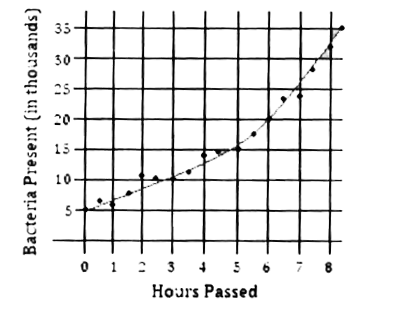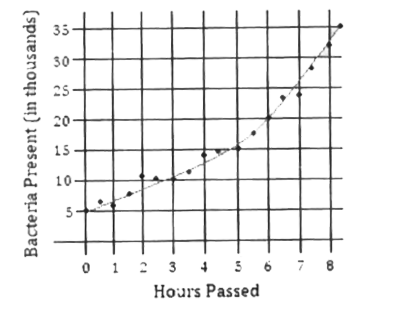If you have a dense laboratory culture of bacteria in a petri what is the best measure to report its density ?
To determine the best measure to report the density of a dense laboratory culture of bacteria in a petri dish, follow these steps:
1. Understand the Concept of Density in Bacteria:
- Density in the context of bacteria can be defined as the number of bacterial cells per unit volume.
2. Dilution of the Culture:
- Since the culture is dense, it is important to dilute the sample to a manageable level for counting. A common practice is to dilute the sample by a factor of 100.
3. Use of Colony Forming Units (CFU):
- The density of bacteria is often reported in terms of Colony Forming Units (CFU). This unit represents the number of viable bacteria that can form colonies when cultured.
4. Performing the Dilution:
- Take a small volume of the dense bacterial culture and dilute it in a sterile diluent (like saline or broth) by a factor of 100.
5. Plating the Diluted Sample:
- After dilution, a small volume of the diluted sample is plated onto an agar plate.
6. Incubation:
- Allow the agar plates to incubate for a specific period (usually 24-48 hours) at an appropriate temperature for bacterial growth.
7. Counting the Colonies:
- After incubation, count the number of colonies that have formed on the agar plate. Each colony originates from a single bacterium or a group of bacteria.
8. Calculating CFU:
- The CFU can be calculated using the formula:
CFU=Number of colonies×Dilution factorVolume plated (in mL)
- This gives you the density of bacteria in the original culture.
9. Reporting the Density:
- The final density of the bacterial culture can be reported in terms of CFU/mL, which provides a clear measure of the bacterial density in the original culture.
Final Answer:
The best measure to report the density of a dense laboratory culture of bacteria in a petri dish is Colony Forming Units (CFU) calculated from the diluted sample.
---
- Density in the context of bacteria can be defined as the number of bacterial cells per unit volume.
- Since the culture is dense, it is important to dilute the sample to a manageable level for counting. A common practice is to dilute the sample by a factor of 100.
- The density of bacteria is often reported in terms of Colony Forming Units (CFU). This unit represents the number of viable bacteria that can form colonies when cultured.
- Take a small volume of the dense bacterial culture and dilute it in a sterile diluent (like saline or broth) by a factor of 100.
- After dilution, a small volume of the diluted sample is plated onto an agar plate.
- Allow the agar plates to incubate for a specific period (usually 24-48 hours) at an appropriate temperature for bacterial growth.
- After incubation, count the number of colonies that have formed on the agar plate. Each colony originates from a single bacterium or a group of bacteria.
- The CFU can be calculated using the formula:
CFU=Number of colonies×Dilution factorVolume plated (in mL)
- This gives you the density of bacteria in the original culture.
- The final density of the bacterial culture can be reported in terms of CFU/mL, which provides a clear measure of the bacterial density in the original culture.
The best measure to report the density of a dense laboratory culture of bacteria in a petri dish is Colony Forming Units (CFU) calculated from the diluted sample.
Topper's Solved these Questions
Similar Questions
Knowledge Check
As part of a laboratory experiment, the number of times a light id flashed on a certain culture of bacteria is reduced 20 percent each day. If the light flashed 704 times on the fourth day of the experiment, then the number of times it flashed on the first day is closest to
A880B1,217C1,267D1,375
How would you prepare carbon dioxide in the laboratory? Describe its acidic nature and the action on lime water. What is photosynthesis ?
View SolutionA biologist places a colony consisting of 5000 bacteria into a petri dish. After the intial placement of the bacteria at time t = 0, the biologist measures and estimates the number of bacteria present every half hour. This data was then fitted by an exponential curve of the form y=c.2kt where c and k are constants, t is measured in hours, and y is measured in thousands of bacteria. The scatterplot together with the exponential curve are shown below.

According to the scatterplot, the biologist'smeasurements indicate that the number of bacteria present quadrupled in 6 hours, and the exponential curve passes through the corresponding data point at time t = 6. The exponential function also agrees with the initial number of bacteria. Compute ck.
View SolutionA biologist places a colony consisting of 5000 bacteria into a petri dish. After the intial placement of the bacteria at time t = 0, the biologist measures and estimates the number of bacteria present every half hour. This data was then fitted by an exponential curve of the form y=c.2kt where c and k are constants, t is measured in hours, and y is measured in thousands of bacteria. The scatterplot together with the exponential curve are shown below.

Suppose that the data was fitted with a quadratic function of the form t2+bt+c instead of an exponential function. Assume that the quadratic funtion agrees with the scatterplot at times t = 0 and t = 6. What is the t - coordinate of the vertex of the graph of the quadratic function?
View SolutionWhat kind of covering do bacteria have ?
View SolutionIf two supplementary angles have equal measure, what is the measure of each angles?
View SolutionWhat is a reduction factor of tangent galvanometer and its unit of measurement?
View SolutionThe best way to obtain bacteria and viruses free plants through tissue culture is
View Solution
